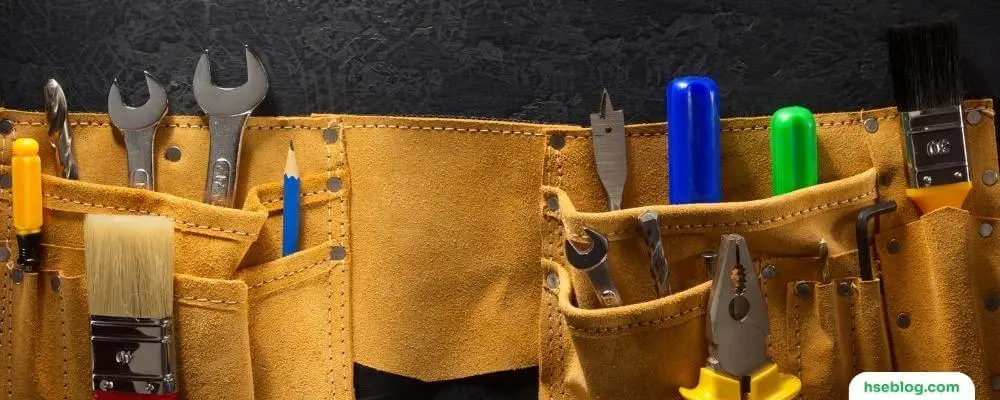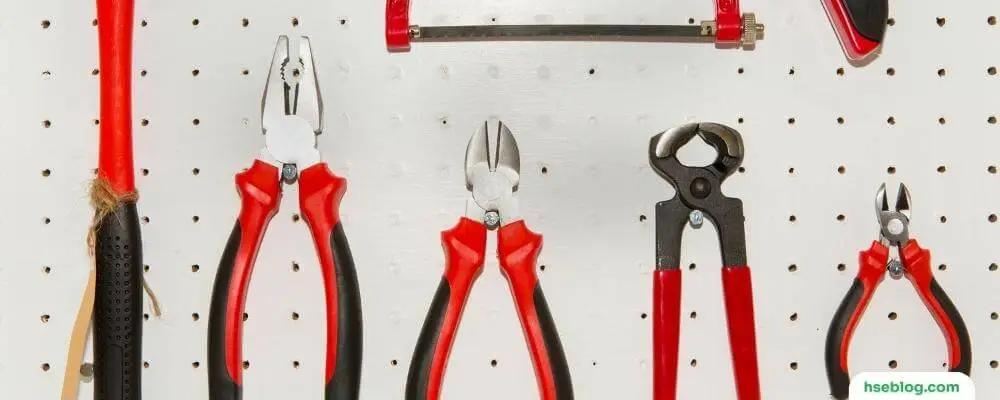In every workshop, garage, or craft room, hand tools are the prized possessions that help bring creativity and utility to life. However, the lifespan and efficacy of these tools are highly dependent on how they are stored and maintained. This blog is a resourceful guide that dives into organizing, protecting, and maintaining your invaluable hand tools.
From casual hobbyists to seasoned craftsmen, this guide offers insights and practical advice to ensure your tools remain in peak condition and are always within reach when inspiration strikes or repairs beckon. So, prepare to revolutionize your workspace as we unveil the secrets to optimal tool storage. Let’s tighten those bolts and sharpen those blades as we venture into adept tool storage!
Why Proper Tool Storage Matters?
Proper tool storage is essential for many reasons, including protecting your investment, ensuring the longevity of tools, and maintaining an efficient workspace. Let’s delve into why proper tool storage matters in more detail:

- Protection from Damage: Tools are often made from materials sensitive to environmental conditions such as humidity, dust, and moisture. Proper storage, especially for metal tools, guards against rust and corrosion. Moreover, by storing tools in a structured manner, you can prevent them from knocking against each other, which could cause chips, dents, or other forms of physical damage.
- Longevity and Performance: When tools are well-preserved and protected, they last longer and perform better. For example, sharp edges remain sharp, calibration stays accurate, and moving parts operate smoothly. This reduces the need for frequent replacements or repairs, ultimately saving money and ensuring your tools are always ready.
- Safety: Proper tool storage is crucial. Tools left around can be a tripping hazard or cause injury if accidentally knocked over. Storing them securely reduces the risk of accidents. Additionally, sharp or dangerous tools can be stored in a way that shields their hazardous parts, protecting you and others from potential harm.
- Efficiency and Productivity: An organized storage system means you spend less time searching for the necessary tools. Knowing where each tool is located eliminates the frustration and wasted time hunting for a tool mid-project. This contributes to a more efficient and productive work process.
- Asset Management: For professionals and businesses, tools are valuable assets. Proper storage allows for easier inventory management and tracking of tools. This is crucial for maintenance schedules, budgeting for replacements, and ensuring no tools are missing or unintentionally taken from the workspace.
- Professionalism and Workspace Aesthetics: A well-organized tool storage system reflects professionalism and a sense of responsibility. It creates a positive impression on clients, colleagues, or anyone who visits your workspace. Additionally, a tidy and structured workspace can be aesthetically pleasing and create a more enjoyable working environment.
- Space Optimization: Proper storage solutions can help optimize your workshop or garage space. Vertical storage options like pegboards, or modular storage systems, can free up floor space, making the area less cluttered and more conducive to work.
- Tool Investment Protection: Tools can be expensive, especially specialized or high-quality. By storing them properly, you are protecting the financial investment you have made in them. This ensures that the money spent on tools yields value over a longer period through sustained performance and reduced need for replacements.
Proper tool storage is not just a matter of convenience but an essential practice that affects the longevity and performance of your tools, safety, productivity, financial investment, and overall work environment.

Storage Of Hand Tools – How to Store Tools Properly?
Storing hand tools properly is essential for ensuring their longevity and maintaining their performance. Proper storage can also contribute to a safer and more efficient workspace. Here are steps and tips on how to store your hand tools properly:
- Clean Tools Before Storing: This involves wiping down tools with a clean cloth to remove dirt, grease, or sawdust. Applying a light coat of oil can help prevent rust on metal tools. Cleaning is essential because dirt and moisture can cause tools to deteriorate over time.
- Organize Tools: Grouping tools according to their type or function helps quickly locate them when needed. For example, keeping all screwdrivers in one place and all pliers in another can save time and prevent clutter.
- Use a Pegboard: A pegboard is a flat board with holes to insert hooks or pegs. You can hang tools on these hooks. Pegboards can be customized and rearranged easily, making them ideal for keeping frequently used tools accessible.
- Toolboxes and Chests: These are containers designed specifically for storing tools. Toolboxes are often portable and great for a smaller collection, while tool chests are larger and suitable for a more extensive collection. A dedicated space for tools protects them from damage and makes them easier to transport.
- Drawer Liners: These are protective sheets that can be cut to fit your toolbox’s or chest’s drawers. They protect both the tools and the drawers from scratches and dents. They also provide cushioning and grip, preventing tools from sliding around when the drawers are opened or closed.
- Shelving Units: Shelving units are ideal for storing larger tools or supplies that can’t be hung on a pegboard. Ensure the shelves are sturdy and appropriately anchored to the wall to support the weight of your tools.
- Use Shadow Boards: A shadow board is similar to a pegboard but has each tool’s outlines or “shadows” painted or marked. This visual guide makes it easy to identify where each tool belongs and quickly notice if it is missing or misplaced.
- Control Humidity: Tools, especially metal ones, can rust if stored damply. Using a dehumidifier or ensuring good ventilation can help to control humidity. Silica gel packs can also be placed in toolboxes to absorb excess moisture.
- Tool Racks and Holders: These are specially designed racks or holders for long-handled tools like brooms, rakes, and hammers. They keep the tools off the floor, preventing them from being tripped over or damaged.
- Secure Storage: If your tools are valuable or there is a risk of theft, consider using lockable cabinets or storage units. Storing them in a room with limited access can further enhance security.
- Regular Maintenance Checks: Inspect your tools for any signs of wear, rust, or damage. This is especially important for tools that are not frequently used, as issues might go unnoticed. Address any problems promptly to keep tools in good working condition.
- Labeling and Inventory: Clearly label the storage locations (drawers, shelves, etc.) and maintain an inventory list of your tools. This helps organize and track your tools, especially in a shared workspace.
- Adequate Space: Ensure enough space to store all tools without them being crowded or stacked on each other. This prevents tools from being damaged due to friction or pressure.
- Mobile Storage Solutions: For professionals who need to move around with their tools, mobile storage solutions like tool carts or portable toolboxes with wheels can be incredibly beneficial. They offer the convenience of mobility without sacrificing organization.
- Store Sharp Tools Safely: Ensure that sharp tools like chisels or saws are stored to protect the sharp edge and not present a hazard.

Tool Storage Options
When you possess an extensive collection of tools, it is commonplace to employ various tool storage systems. Here are several options for storing your tools effectively:
- Portable Toolbox: A portable toolbox is a compact, handheld storage container typically made of metal or plastic. It is ideal for storing a basic set of frequently used tools. Some portable toolboxes come with built-in compartments or removable trays which aid in organizing tools efficiently. They’re ideal for tasks around the house or for professionals who need to carry tools to different locations.
- Tool Bag: Tool bags are made from fabric and generally have soft sides. They are lightweight and often come with multiple pockets and compartments for organizing tools. While they don’t offer the same level of protection as a rigid toolbox, their flexible structure can make them more accommodating for tools of irregular shapes and sizes. They’re also very portable and convenient for carrying tools to different sites.
- Tool Chest: Tool chests are large storage units designed for a workshop setting, often on wheels. They usually have multiple drawers and compartments for storing a large collection of tools. Many tool chests also feature locking mechanisms to secure tools and prevent theft. The wheels make moving the chest around within the workspace easy as needed.
- Pegboards: Pegboards are boards with a grid of holes, allowing for attaching hooks, shelves, and other accessories. They are mounted on a wall and are popular in workshops and garages for their customizable nature. Pegboards keep tools visible and easily accessible but do not offer protection from dust and debris. Regular cleaning of tools stored on pegboards is necessary to keep them in good condition.
- Wall Racks: Wall racks are designed to store larger tools like garden tools, brooms, or mops. These racks are mounted to the wall and often feature hooks or clamps that securely hold the tools. This keeps them off the floor, which saves space and reduces clutter. Additionally, it prevents tripping hazards and makes tools easily accessible.
- Cabinets: Cabinets are enclosed storage units with doors that can store tools in a workshop or garage. Cabinets offer more dust and debris protection than open shelving or pegboards. Tools stored in cabinets are less likely to be affected by the surrounding environment. Cabinets can be lockable, providing an additional layer of security.
- Open Shelving: Open shelving units are simple structures consisting of horizontal shelves, usually made of wood or metal. They don’t have doors, so tools and items are exposed. This makes them easily accessible but also means they don’t have protection from dust and debris. Open shelving is best suited for larger, cumbersome items in drawers or cabinets. It’s important to ensure that the shelves are sturdy and well-supported to handle the weight of the items being stored.
By selecting the appropriate tool storage options based on the type, size, and frequency of use of your tools and the environment in which they are stored, you can maintain the longevity and performance of your tools and create an organized and efficient workspace.
Conclusion
In sum, properly storing hand tools is an indispensable practice that safeguards your investment and ensures that your tools are always in optimal condition for peak performance. By employing a combination of storage solutions such as pegboards, toolboxes, and cabinets and by adhering to maintenance practices like cleaning and regular checks, you not only prolong the life of your tools but also create an organized, efficient, and safer workspace. Whether you are a professional tradesperson or a DIY enthusiast, storing your tools properly is an investment in the longevity and effectiveness of your toolkit and a contributor to a more streamlined and productive working environment.

